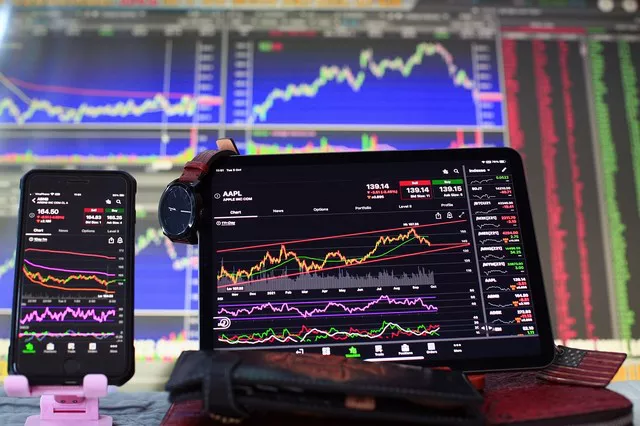In the dynamic world of financial markets, traders seek opportunities around the clock, even when traditional trading hours come to a close. Overnight futures trading, a lesser-known but vital aspect of market activity, allows traders to buy or sell futures contracts after the official market close and before it reopens the next day. In this article, we delve into the intricacies of overnight futures trading, exploring its definition, market hours, liquidity, examples, risk considerations, and comparisons with other trading timeframes.
Definition of Overnight Futures Trading
Overnight futures trading involves the execution of trades in futures contracts outside of regular trading hours, typically occurring after the official market close and before it reopens the following day. This trading activity takes place during extended hours, providing traders with additional opportunities to capitalize on market movements beyond the standard trading session. Unlike intraday trading, where positions are opened and closed within the same trading day, overnight futures trading allows traders to hold positions overnight, exposing them to potential price movements during non-standard trading hours.
Market Hours and Availability
Overnight futures trading is made possible by exchanges that offer extended trading hours, allowing market participants to engage in trading activity beyond the conventional session. While not all markets permit overnight futures trading, many major exchanges, such as the Chicago Mercantile Exchange (CME) and the Intercontinental Exchange (ICE), provide extended trading hours for select futures contracts. These extended hours typically vary by exchange and may encompass pre-market and after-hours trading sessions, extending well into the evening and early morning hours.
Liquidity and Volatility
One of the key considerations for traders engaging in overnight futures trading is the liquidity and volatility of the market during extended hours. Liquidity, or the ease with which a trader can enter or exit a position without causing significant price changes, tends to be lower during extended trading hours compared to standard trading sessions. As a result, bid-ask spreads may widen, potentially leading to increased trading costs for market participants.
Moreover, volatility, or the degree of price fluctuations within a given market, can be heightened during extended trading hours due to the lower number of market participants and reduced trading volumes. With fewer traders actively participating in the market, the potential for erratic price movements and unexpected volatility increases, presenting both opportunities and risks for overnight futures traders.
See Also: How to find Nifty futures in Zerodha?
Examples and Use Cases
To illustrate overnight futures trading in action, consider the following scenario: A trader believes that an upcoming economic report will have a significant impact on the price of crude oil futures. Anticipating a bullish outcome, the trader decides to buy crude oil futures contracts after the official market close to capitalize on potential price appreciation overnight. If the trader’s prediction proves accurate and crude oil prices rise overnight, they can sell their futures contracts the following day at a higher price, realizing a profit from their overnight trade.
Traders may engage in overnight futures trading for various reasons, including anticipation of global events impacting markets, expectations for significant price movements outside of regular trading hours, or strategic positioning ahead of key economic releases or corporate earnings announcements. By leveraging extended trading hours, traders can react to market developments and execute trades when traditional markets are closed, seizing opportunities that may arise during non-standard trading sessions.
Risk Considerations
Despite the potential rewards, overnight futures trading carries inherent risks that traders must consider carefully. Market conditions during extended trading hours can be unpredictable, with the possibility of unexpected news announcements, geopolitical events, or other factors influencing prices. These factors can lead to price gaps or sudden reversals in market trends, exposing traders to increased volatility and potential losses.
To mitigate the risks associated with overnight futures trading, traders must implement robust risk management strategies, including setting stop-loss orders to limit potential losses, diversifying their portfolios to spread risk across multiple assets, and carefully monitoring market developments throughout extended trading hours. Additionally, traders should be prepared to adapt their trading plans and strategies based on changing market conditions and news events, remaining flexible and responsive to emerging opportunities and risks.
Comparison with Other Trading Timeframes
In comparing overnight futures trading with other trading timeframes, it is essential to recognize the distinct characteristics and considerations associated with each approach. Unlike intraday trading, where positions are opened and closed within the same trading day, overnight futures trading allows traders to hold positions overnight, requiring careful planning and risk management due to the lack of real-time monitoring during non-standard trading hours.
Conversely, long-term positions in futures markets are typically held for extended periods, ranging from days to weeks or even months, with traders seeking to capitalize on broader market trends and macroeconomic developments. While overnight futures trading offers the potential for short-term profits, long-term positions require a more patient and strategic approach, with traders focusing on fundamental analysis, technical indicators, and macroeconomic trends to inform their investment decisions.
Conclusion
In summary, overnight futures trading provides traders with opportunities to capitalize on market movements outside of standard trading hours, leveraging extended trading sessions to execute trades and position themselves strategically for the next trading day. However, traders must be mindful of the unique challenges and risks associated with overnight trading, including lower liquidity, heightened volatility, and the potential for unexpected price gaps. By implementing effective risk management strategies and staying informed of market developments, traders can navigate the complexities of overnight futures trading successfully and seize opportunities in the ever-evolving global financial markets.

